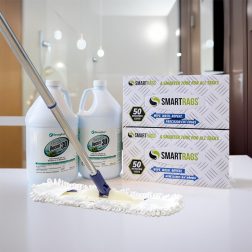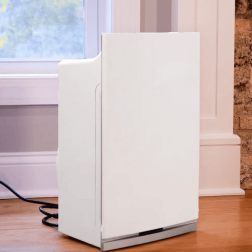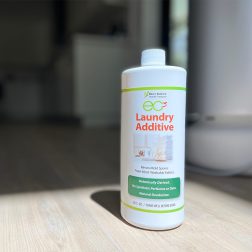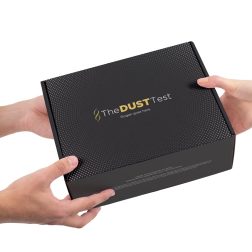No products in the cart.
Mold Resources
Knowing how to remove mold from carpet is key to ensuring that your home doesn’t become a hazard zone. This is a common issue, so here’s what you need to know to get yourself on the path to success.
Why Mold on Carpeting Occurs
Carpeting can create the perfect conditions for mold spores to transition into living colonies. Edible options are an easy box to tick off. The organic matter in the carpet means that the floor covering itself can be used as a food source. Tack on the organic matter, like skin cells, that embed themselves into the surface fibers, and it’s a perfect place for a mold home. The padding and subflooring can act as edible options as well.
That leaves moisture. This element can be introduced in various ways, including spills, leaks, flooding, and even high humidity. A moisture source must only be present for 24-48 hours for mold under the carpet to develop.
How to Remove Mold from Carpet
The best answer to how to remove mold from carpet is to hire professionals to come in and resolve the problem. Because of the porosity of the carpet, padding, and subflooring, the roots of mold can grow deep into the surface and be difficult to eradicate completely. Small particles like mycotoxins can also embed themselves in the fibers, making them hard to get rid of as well.
Not to mention, with mold in carpeting especially, it’s difficult to determine the extent of the contamination situation. The growth could have continued for some time before you realized there was a problem, allowing for more problems to develop in the carpet or other areas. These factors, taken as a whole, are why properly remediating mold under the carpet is so tricky.
To handle the problem effectively, all of the contamination must be removed so that exposure does not continue.
Hiring professionals will help ensure that your home once again becomes a safe space.
How to Remove Mold from Carpet Yourself
If you want to attempt a remediation project, proceed cautiously and only work on areas under 10 square feet. Contacting an expert beforehand can give you a full breakdown of how to address the issue properly.
Things to keep in mind:
- Use correct engineering controls and put PPE in place
- The source that led to the growth needs to be resolved
- All porous materials, like drywall, need to be removed and replaced
- All surfaces need to be decontaminated using the proper remediation protocols based on the specific surface type
- The surrounding space should be deeply cleaned to remove any particles released by the active growth
Once your finished and you've deep cleaned the home multiple times, test the space with The Dust Test to ensure the contamination has been successfully removed.
If you aren’t confident that you can tick off each box, the professional route is the way to ensure all the contamination is removed.
Showing the single result
How to Prevent Mold in Carpeting
Knowing how to remove mold from carpet is important, but the best way to deal with the issue is to prevent it from happening in the first place!
To learn more about how to prevent mold on carpeting, check out this article.
Showing all 3 results
-

HomeCleanse Cleaning
Take your cleaning to the next level buying all the tools we use to keep...
-
$299.00 – $549.00 SHOP NOW -
Sale

Intellipure Compact Air Purifier
Small in size, but delivers powerful results, reducing airborne microorganisms like mold, viruses, and bacteria.
-
Original price was: $549.00.$199.00Current price is: $199.00. SHOP NOW -

EC3 Laundry Additive
Add EC3 to every rinse cycle to rinse away mold, bacteria and musty odors from...
-
$23.00 SHOP NOW
Still Have Questions?
A member of our team is here to help! Click on “Get Started ➤” below to book a consultation with a member of the HOMECLEANSE team. We have a few quick questions that will help us put together a roadmap to solve or prevent all of your mold problems.
Two minutes of your time could lead to better health for you and your family.

